YOU ARE LEARNING:
Multiplying Fractions

Multiplying Fractions
You can multiply fractions following a particular rule.
How much of this pizza is left? Give your answer as a fraction.

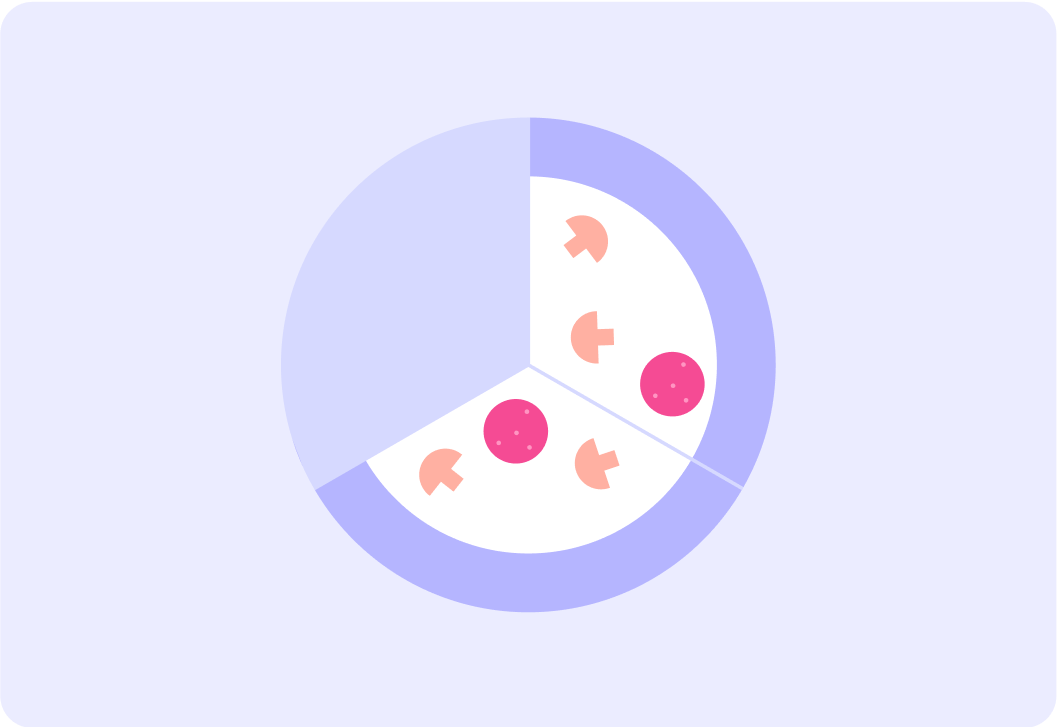
If you wanted to split the left-over pizza evenly between two people they would each get _______ of the remaining pizza.
A) half B) a third C) all

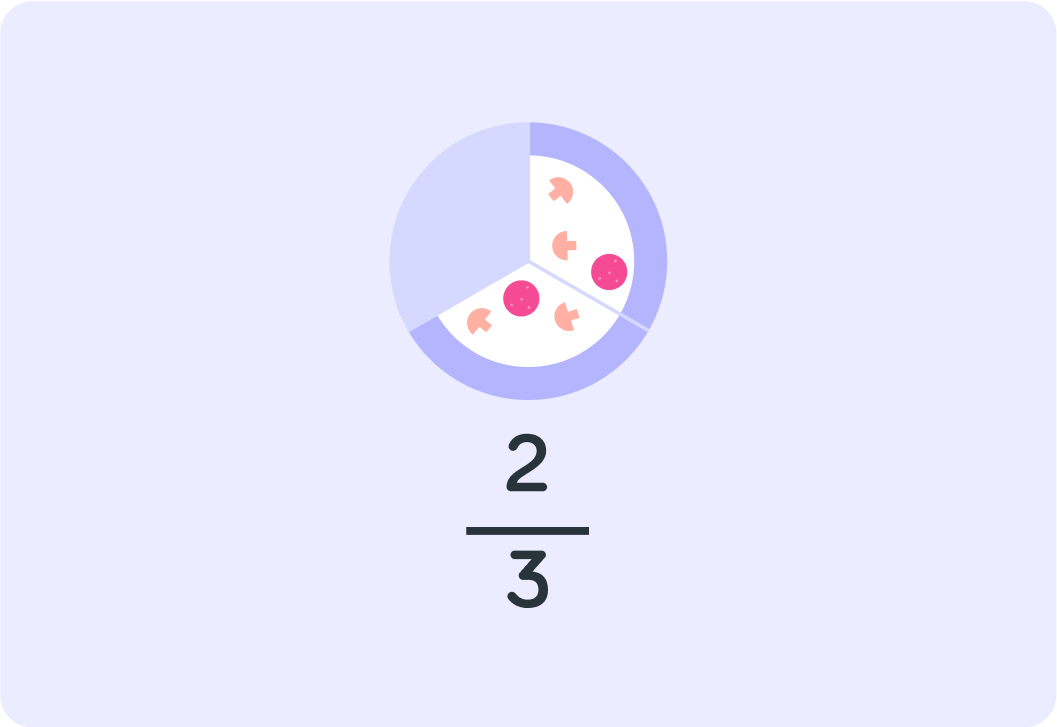
So two people split the left-over pizza so they each get half of the remaining pizza
You can express that with fractions like this 32×21

How much of the original whole pizza does each of the two people get? Give your answer as a fraction.

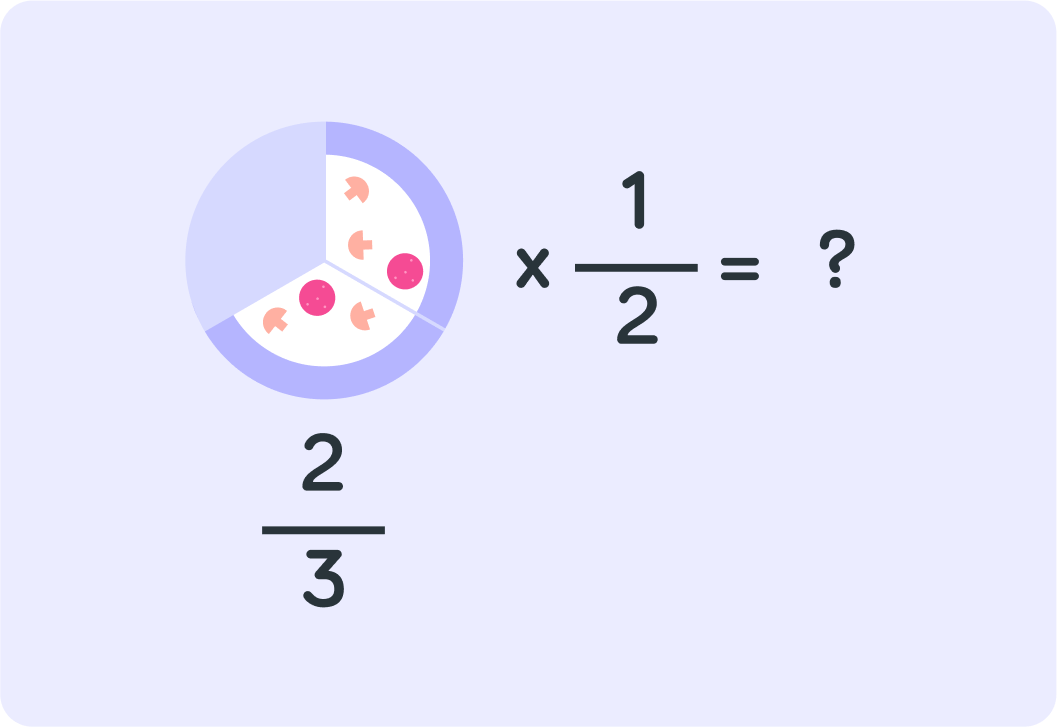
Each of the two people will get 31 of the original pizza
So 32×21=31
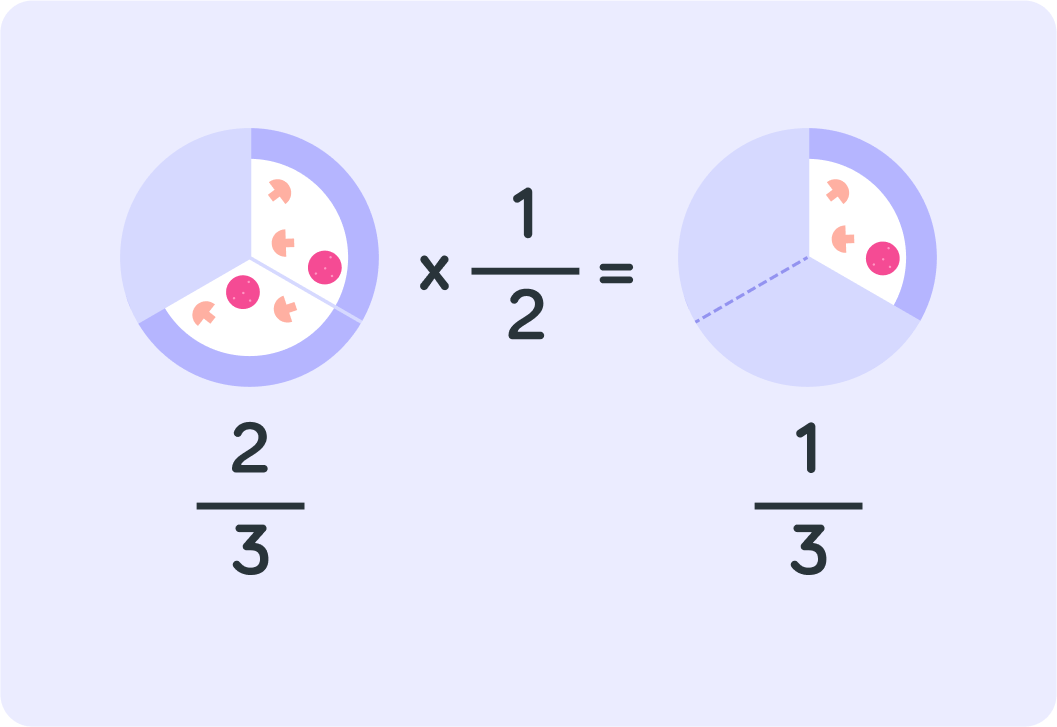
What if you didn't want to split the remaining 32 between 2 people?
What if you wanted to split it between 3 people?

When you split between 2 people, you multiplied by 21. If you split between 3 people, you multiply by...


In order to split the left-over pizza evenly, you can split up each of the slices into thirds
This is the same as if the pizza had originally been divided into 9 slices.
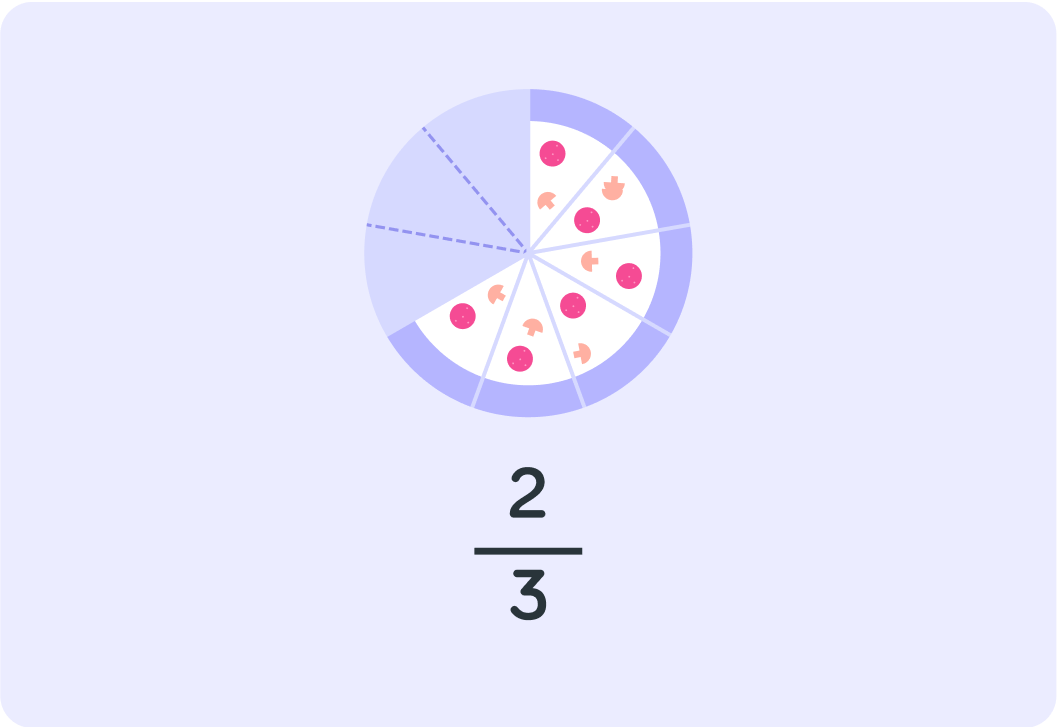
How many slices are left of this pizza now after it has been divided into 9ths?


There are 6 remaining slices and 3 people - if each person gets the same number of slices, how many slices does each person get?

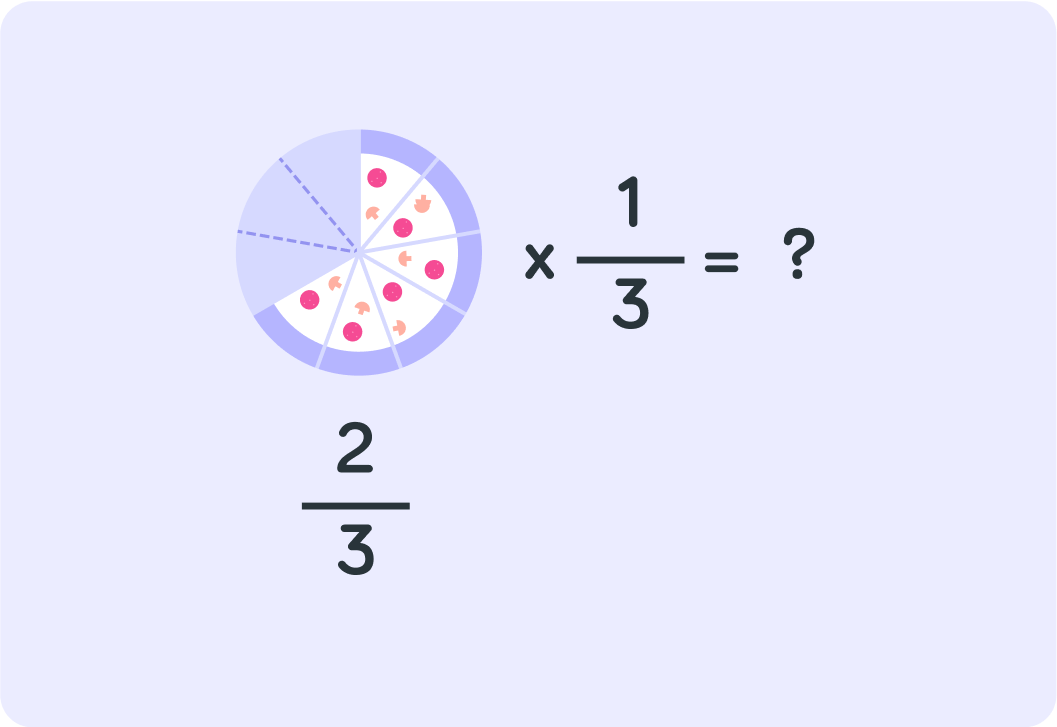
So each of the 3 people get 2 out of the 9 slices in the original pizza. How do you write that as a fraction?

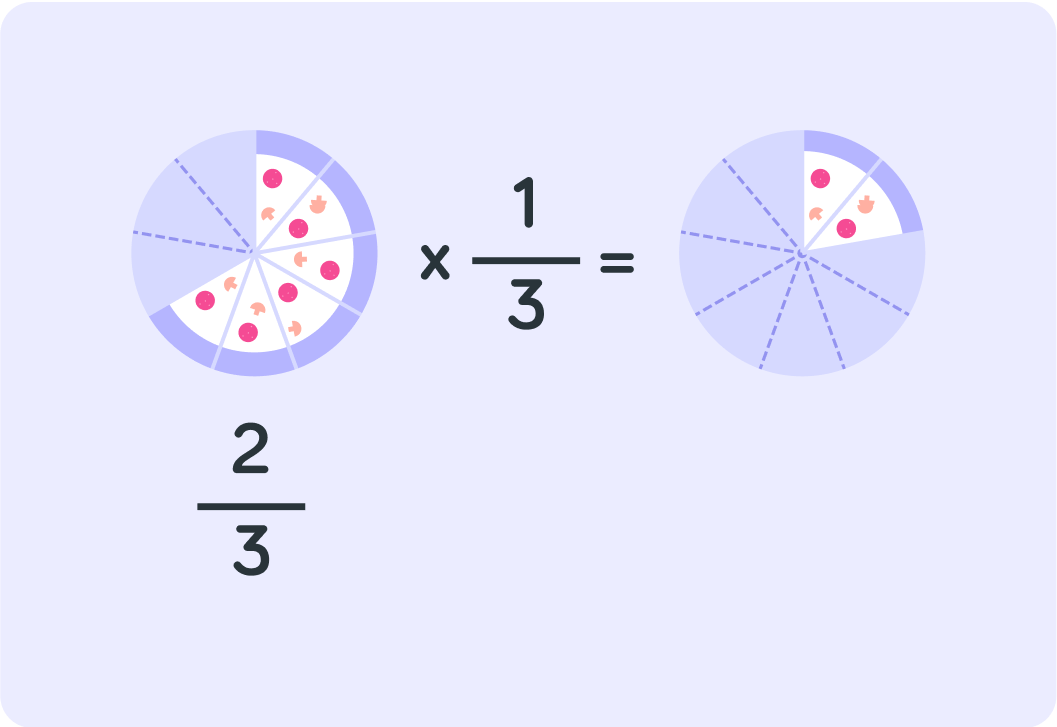
So!
32×31=92
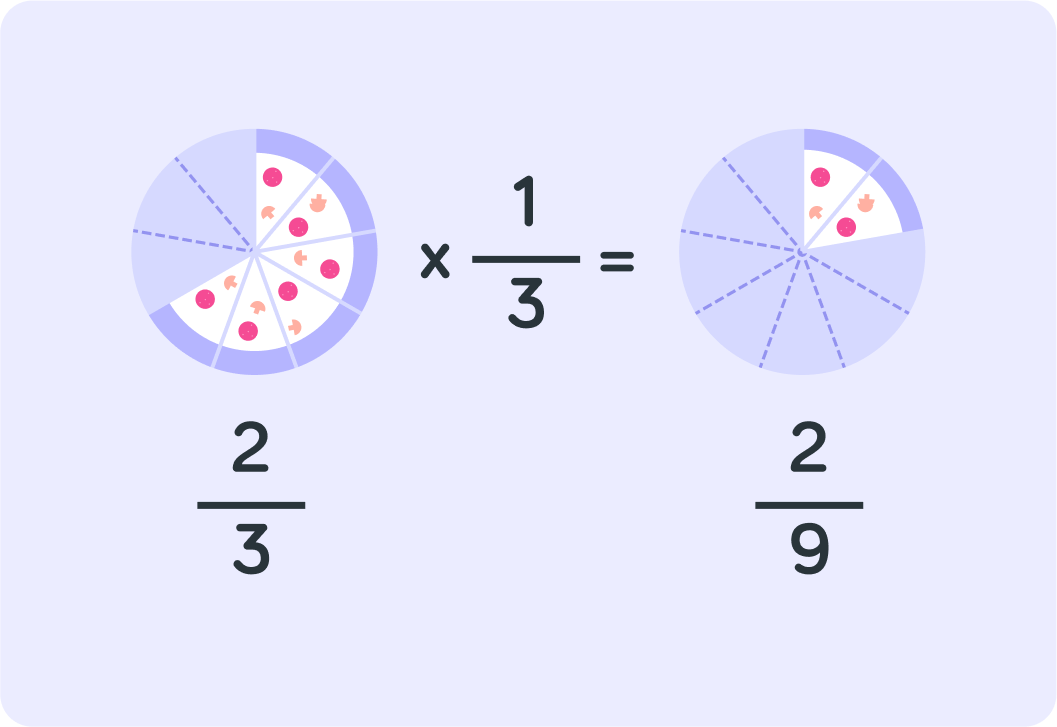
Now, look only at the maths in this example
How did you actually get from 32×31 to 92?
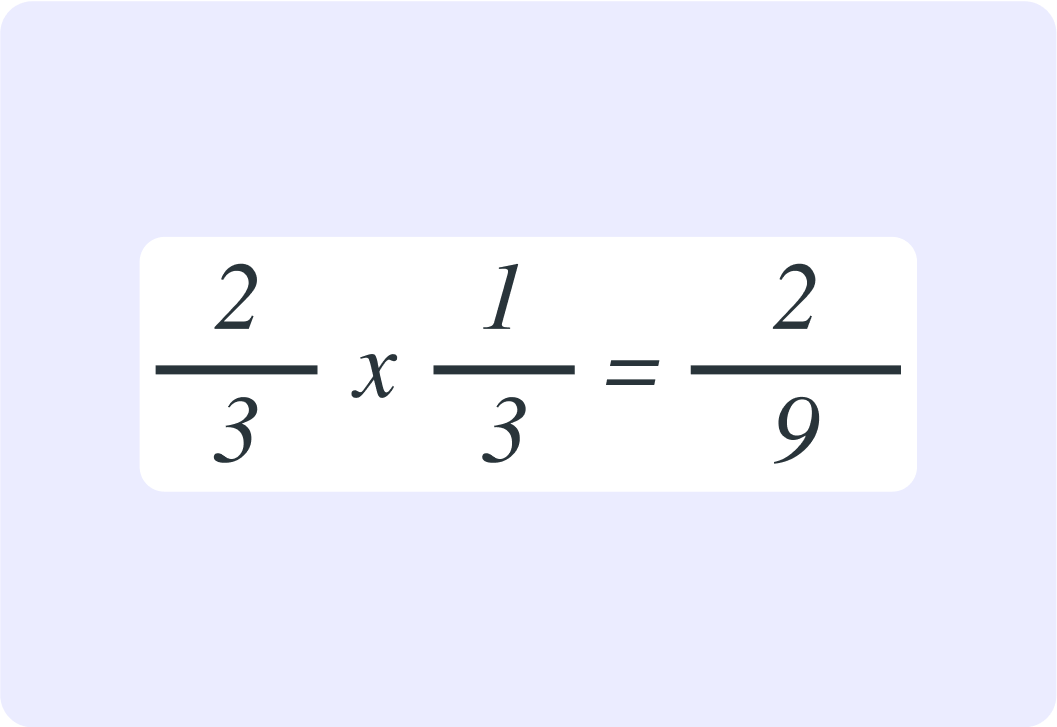
You got to the denominator 9 by ______________ the denominators in the other fractions.
A) adding B) multiplying


You also got to the numerator 2 in the result by ______________ the numerators in the other fractions.


So you multiply two fractions by multiplying the numerators and the denominators. How do you write that in a generalised form?
A) ca×db=c+da+b B) ca×db=c×da×b


So you multiply two fractions like this
ca×db=c×da×b

What is 54×32? Give your answer as a fraction.

What is 63×34? Give your answer as a fully simplified fraction.

Sometimes you end up having to multiply numbers that aren't super easy to multiply
For example, here you are meant to multiply 21 and 25
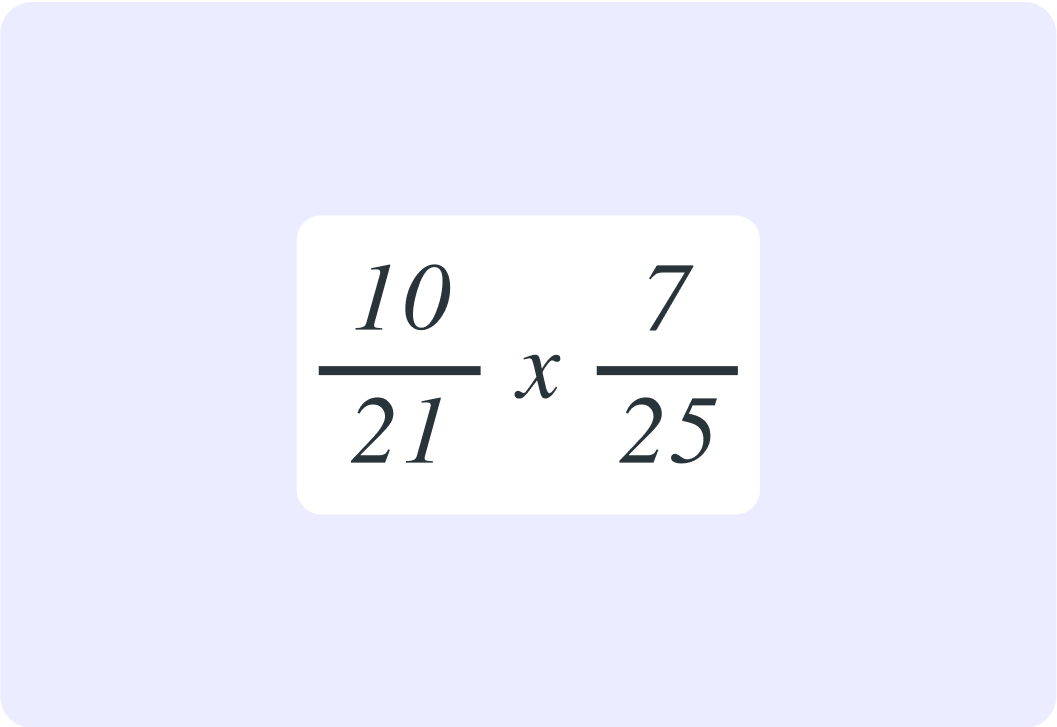
There is a trick!
If you can find a number that both the numerator of one fraction and the denominator of the other fraction can be divided by, you can make the problem easier.

What is the highest number that both 10 and 25 can be divided by (their highest common factor)?

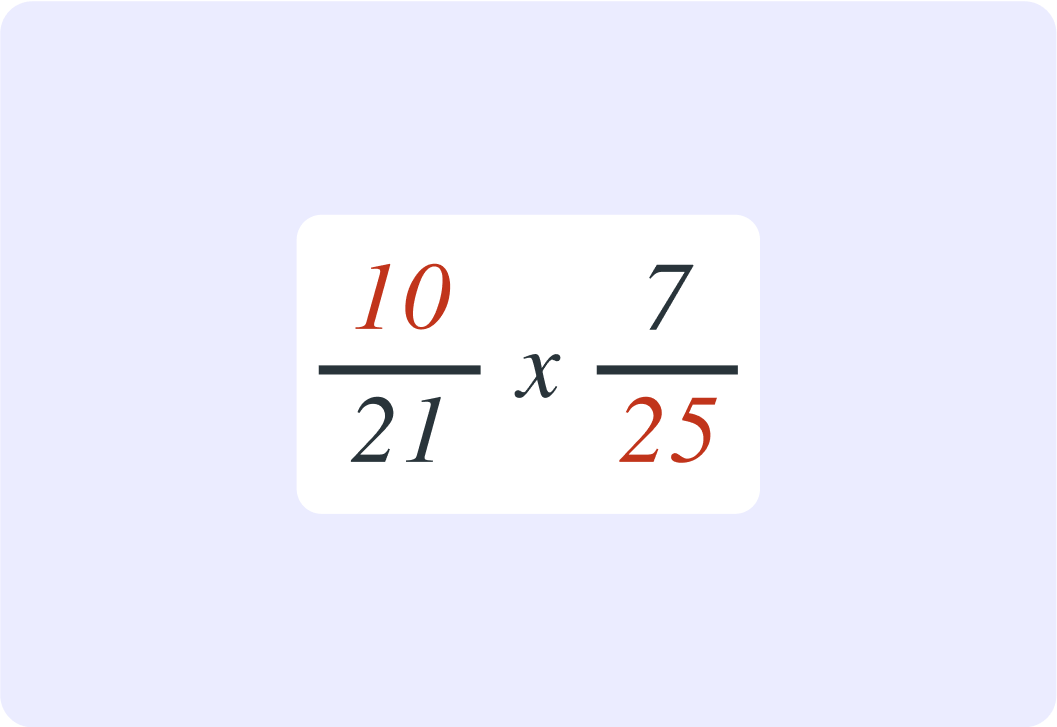
So you can now simplify by dividing that numerator and that denominator by 5
2110÷5×25÷57=212×57

What is the highest common factor between 7 and 21?

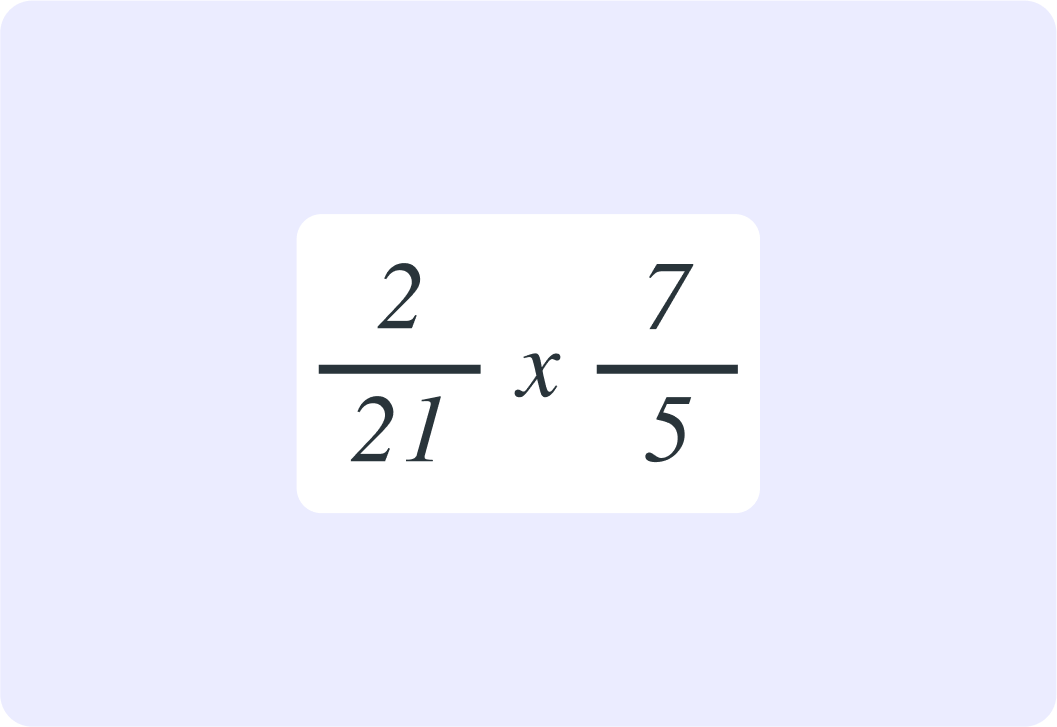
So you can now simplify further by dividing that numerator and that denominator by 7
21÷72×57÷7=32×51
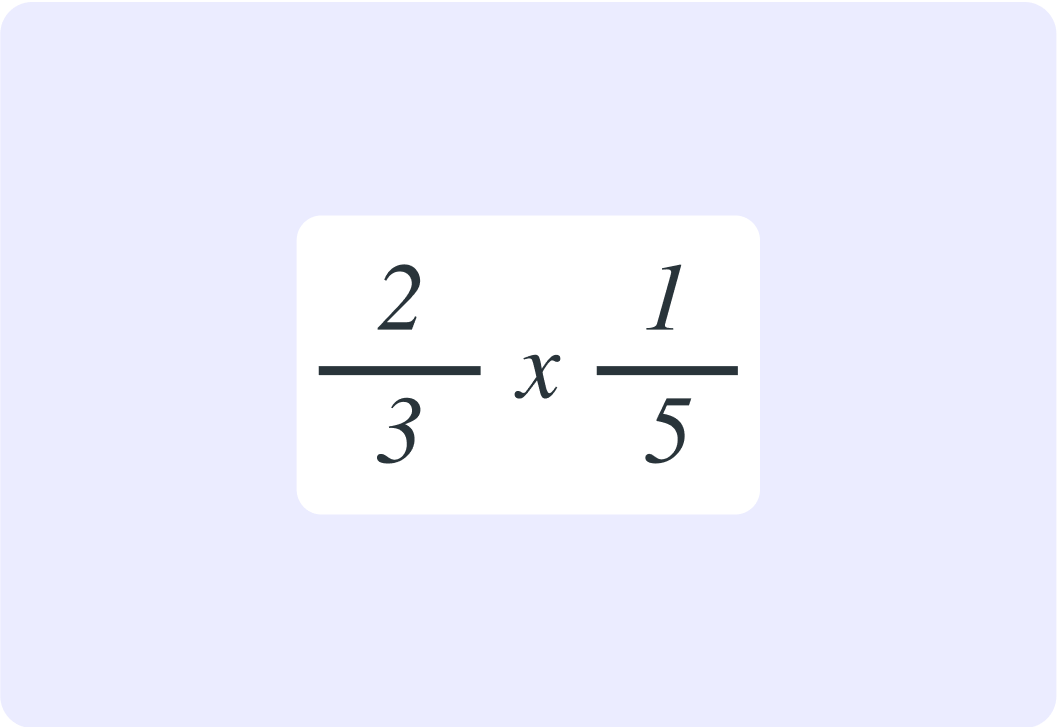
So now you have simplified 2110×257 to 32×51. What is the result as a fraction?


It would also be good to simplify this problem
You need to find the highest common factor between the numerator of one fraction and the denominator of the other fraction.
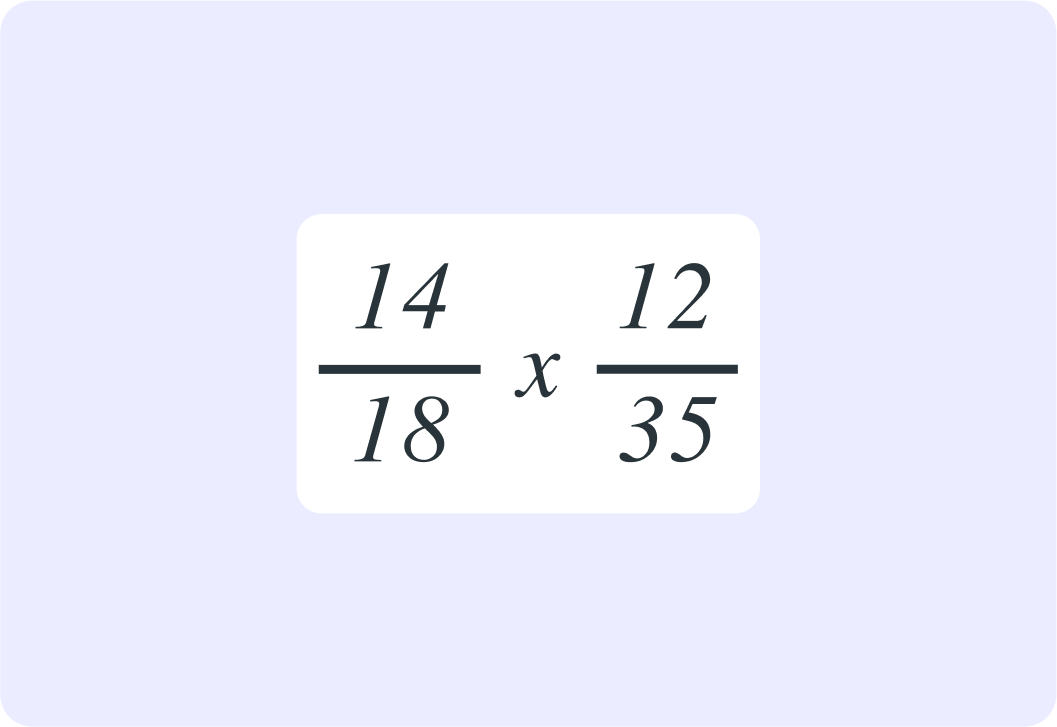
What is the highest common factor between 14 and 35?

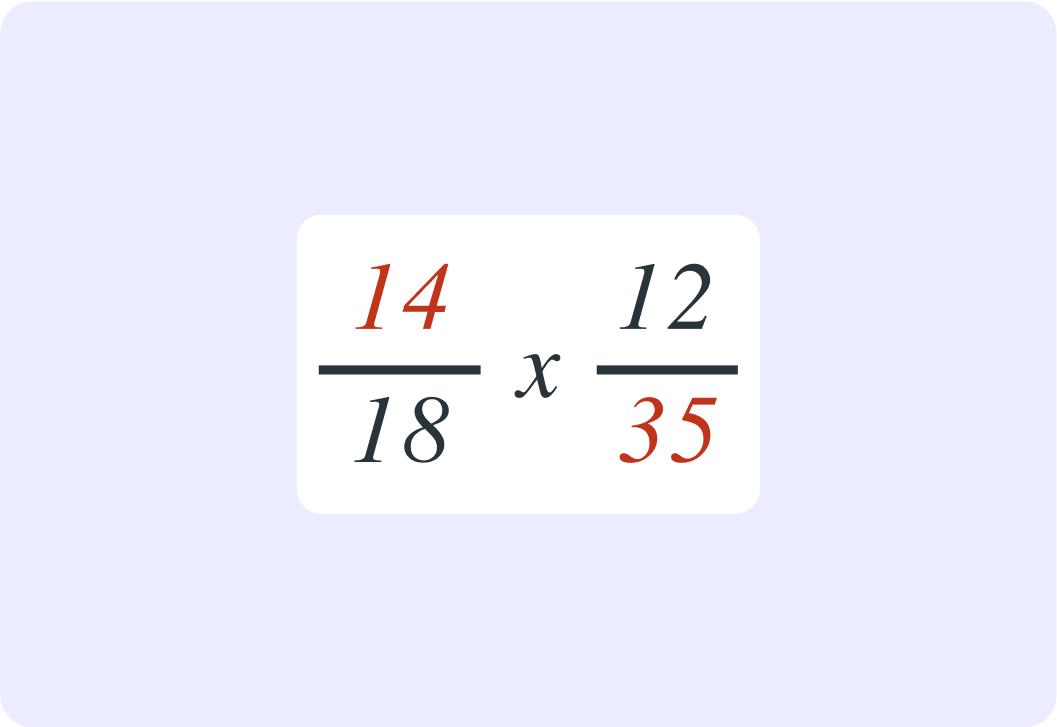
What is the highest common factor between 18 and 12?

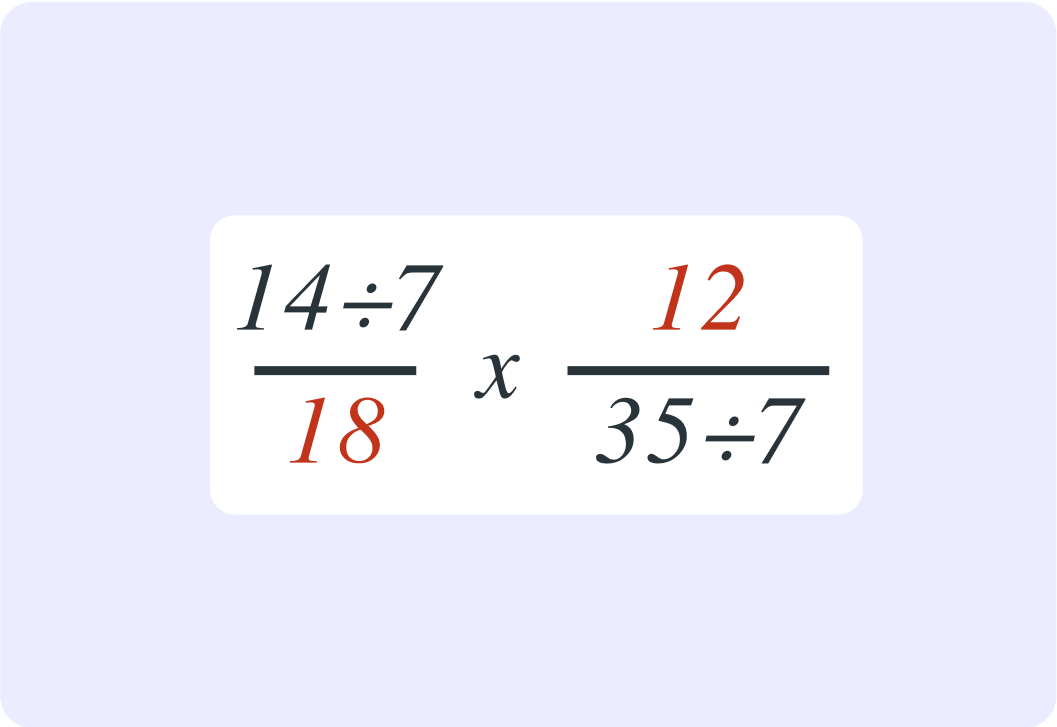
So now you have simplified 1814×3512 to 32×52. What is the result as a fraction?

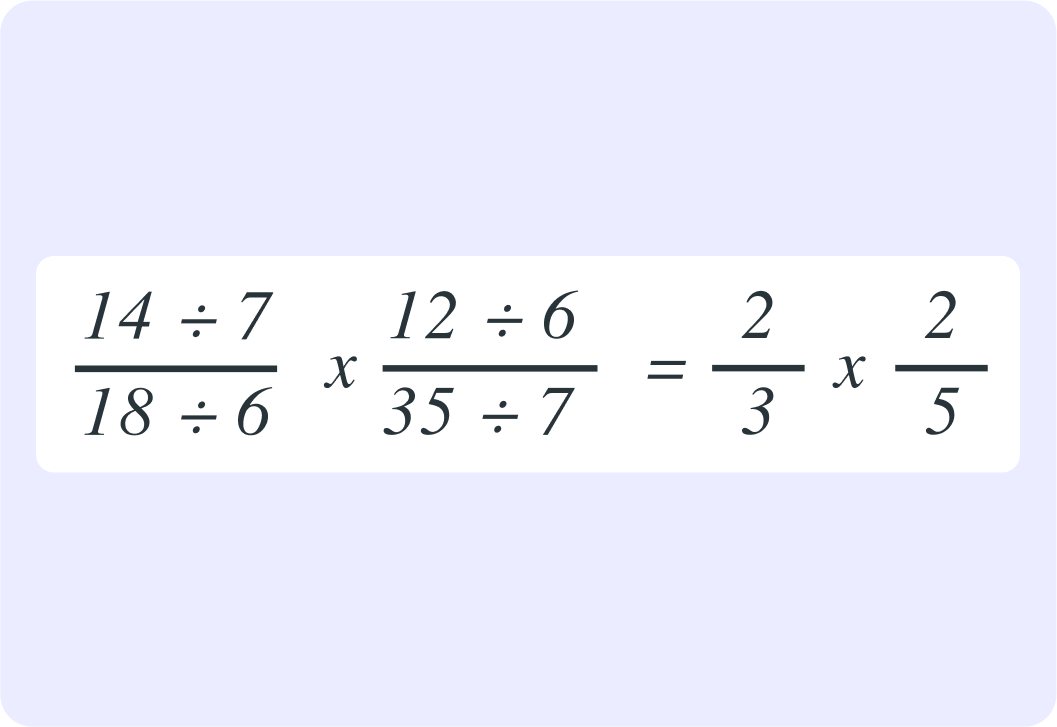
So you could simplify 1814×3512 to 32×52
That made it easier to work out that 1814×3512=154
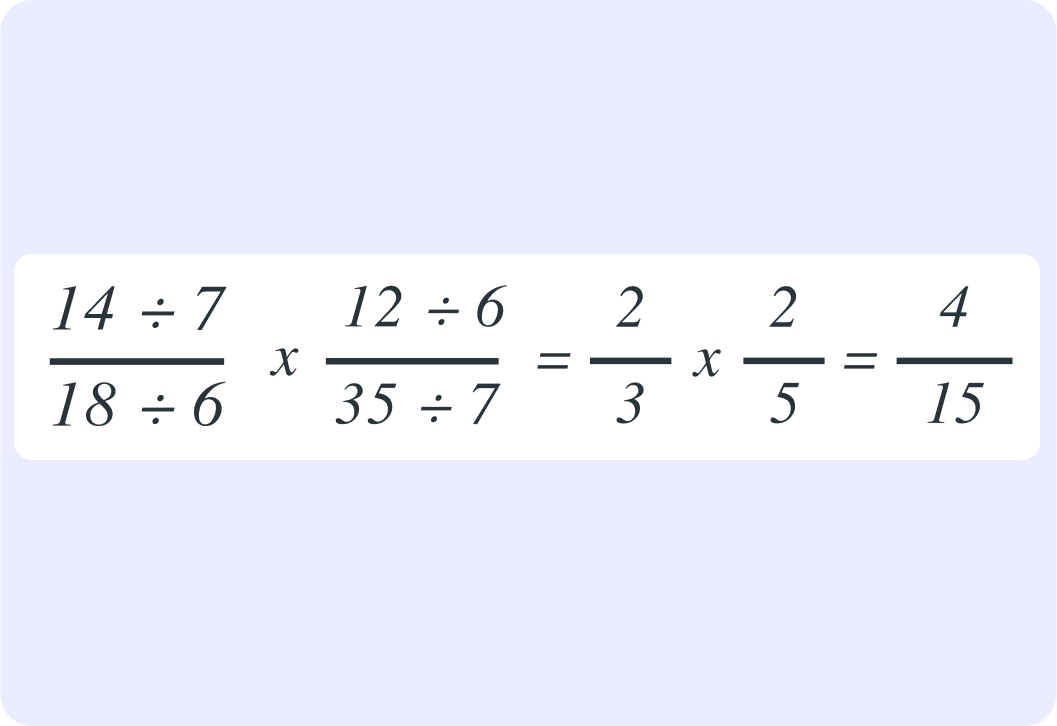
Simplify 2416×324 and give your answer as a fully simplified fraction.

Summary! You can multiply a fraction with another fraction
You multiply the numerators in the two fractions and then the denominators.
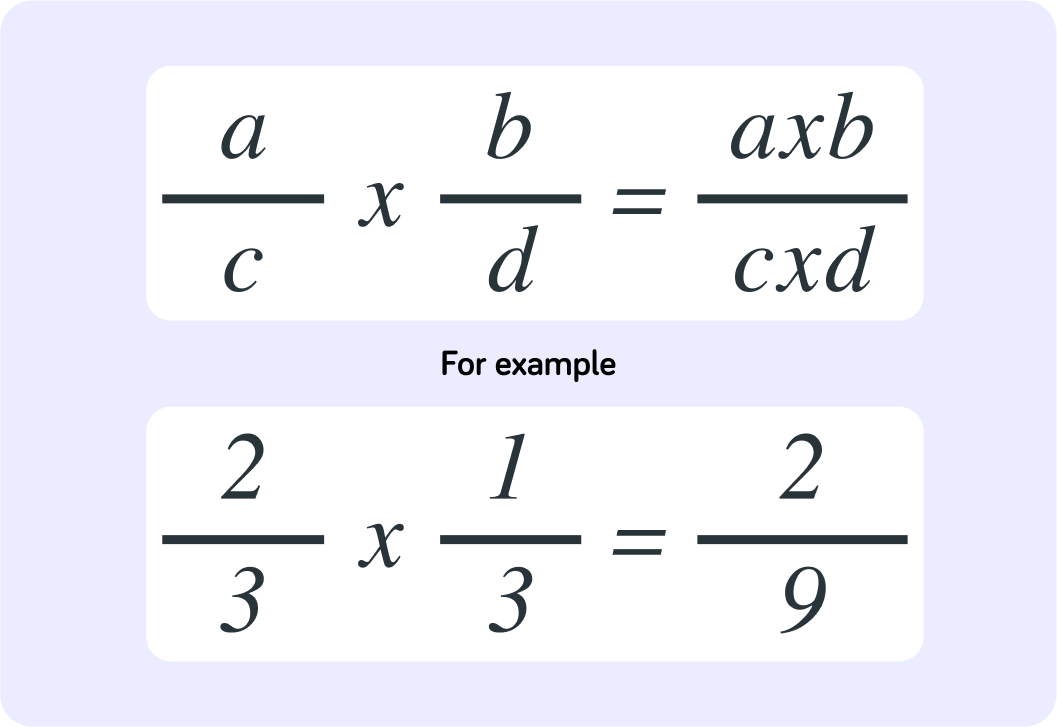
If the multiplication is complicated, you can try to simplify the problem
You find the highest common factor between the numerator in one fraction and the denominator in the other fraction.

